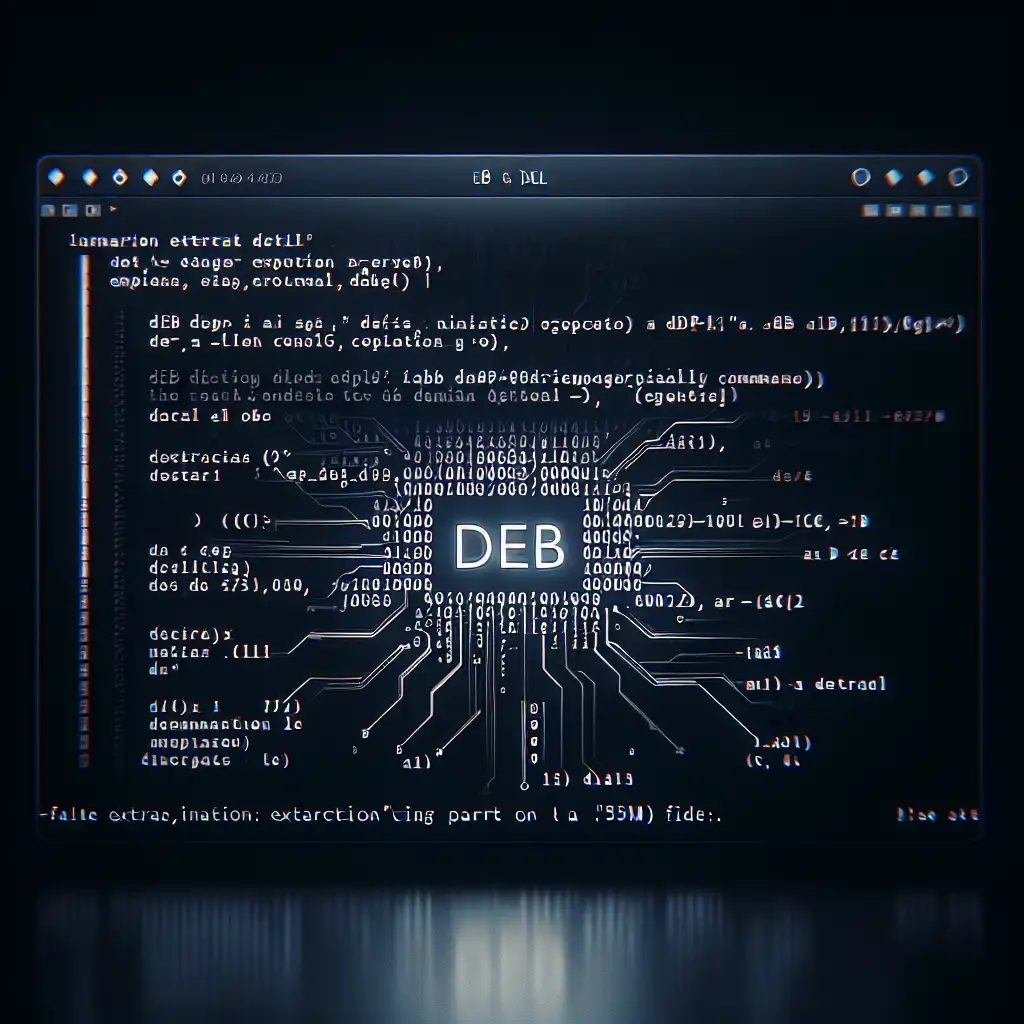Mastering the Command Line: How to Open and Inspect .deb Files Without Installation
Forget blindly installing .deb files from unknown sources. Learn the command-line tools and techniques to peek inside these packages safely, giving you control and preventing potential system risks before they become a problem.
When working with Linux systems—especially Debian, Ubuntu, or their derivatives—.deb files are the standard package format for installing software. But what if you want to verify what’s inside a .deb package before actually installing it? Maybe you want to audit the package contents, check dependencies, or troubleshoot issues without cluttering your system.
In this practical guide, you'll discover how to open and inspect .deb files using simple command-line tools—without any installation. Whether you’re a developer vetting third-party software or a sysadmin maintaining secure environments, mastering these techniques lets you make smarter, safer choices with your packages.
Why Peek Inside .deb Files?
- Security: Verify there’s no malicious script or unexpected binary included.
- Stability: Check all the files a package will drop into your system.
- Dependency Management: See which libraries and other packages it requires.
- Troubleshooting: Confirm versions or file conflicts before deployment.
The Anatomy of a .deb File
A .deb file is essentially an archive with two tarball components:
control.tar.*: Contains metadata like control scripts (postinst,preinst), dependencies, package info.data.tar.*: Contains the actual files that will be installed on your system (binaries, configs).- Additionally, there’s
debian-binarywhich indicates the package version format.
Knowing this helps understand what you’ll extract and inspect.
How To Safely Open and Inspect .deb Files From The Command Line
1. Use dpkg-deb --info to View Package Metadata
This command gives you an overview—package name, version, essential dependencies:
dpkg-deb --info example-package.deb
Example output:
new Debian package, version 2.0.
size 123456 bytes: control archive= 1234 bytes.
123 bytes, 10 lines control
234 bytes, 20 lines md5sums
Package: example-package
Version: 1.2.3
Section: utils
Priority: optional
Architecture: amd64
Depends: libc6 (>= 2.14), libssl1.1 (>= 1.1.0)
Maintainer: Your Name <you@example.com>
Description: Example utility for demonstration purposes.
This is the first step to understand what you’re dealing with.
2. Extract Control Information Without Installing
To inspect scripts (postinst, prerm) or look at dependency files manually:
dpkg-deb -e example-package.deb ./control-files/
This extracts the entire control section into ./control-files/ folder.
You can then browse:
ls ./control-files/
cat ./control-files/control
cat ./control-files/postinst
This helps verify any pre/post installation scripts that could affect your system.
3. Extract and Explore Data Files
If you want to see exactly what files are in the package before adding anything to your system:
dpkg-deb -x example-package.deb ./data-files/
This extracts all files into a directory called ./data-files/ exactly as they would be installed in /.
You can explore:
tree ./data-files/
cat ./data-files/usr/bin/example-binary
head -n 20 ./data-files/etc/example.conf
This lets you check config files, binaries, libraries without risk.
4. List Files Contained In The Package
To quickly list all paths that will be installed:
dpkg-deb --contents example-package.deb
Example snippet:
drwxr-xr-x root/root 0 2024-04-25 10:00 ./usr/
drwxr-xr-x root/root 0 2024-04-25 10:00 ./usr/bin/
-rwxr-xr-x root/root 12345 2024-04-25 10:00 ./usr/bin/example-binary
-rw-r--r-- root/root 2345 2024-04-25 10:00 ./etc/example.conf
Useful for verifying paths and ownership info quickly.
Bonus Tips
Check MD5 Checksums Within The Package
To verify integrity of packaged files:
dpkg-deb -e example-package.deb /tmp/control-checksums/
cat /tmp/control-checksums/md5sums
You can run md5sum on extracted data-files/ to cross-check integrity before installation.
Use ar To Manually Unpack .deb
Since deb packages are actually ar archives:
ar t example-package.deb
# Lists files inside:
# debian-binary control.tar.gz data.tar.xz
ar x example-package.deb
tar -tf control.tar.gz # List control details inside
tar -xf data.tar.xz # Extract payload manually too
Good for forensic inspection if normal tools fail.
Wrapping Up
Opening and inspecting .deb files without installing them unlocks greater transparency and control over your Linux system’s software intake process. By mastering commands like dpkg-deb, you'll be able to:
- Audit packages before deploying in production.
- Avoid potential security risks from unknown sources.
- Resolve dependency questions ahead of time.
- Gain peace of mind knowing exactly what software does under the hood.
Keep these commands handy in your sysadmin toolkit—you never know when this knowledge will save you from a tricky situation!
If you've found this guide helpful or have your own tips on working with Debian packages safely, leave a comment below!
Happy shell-scripting! 🐚
